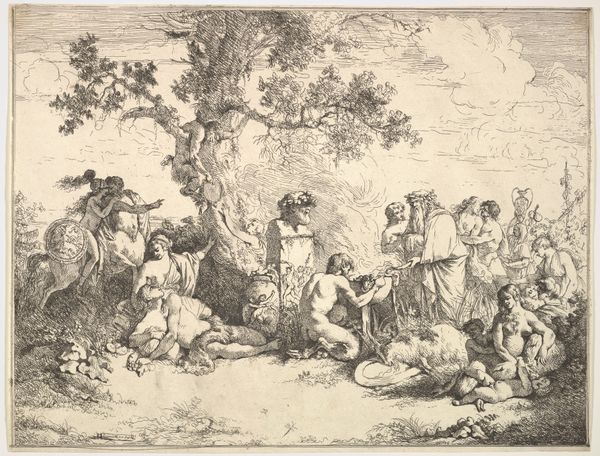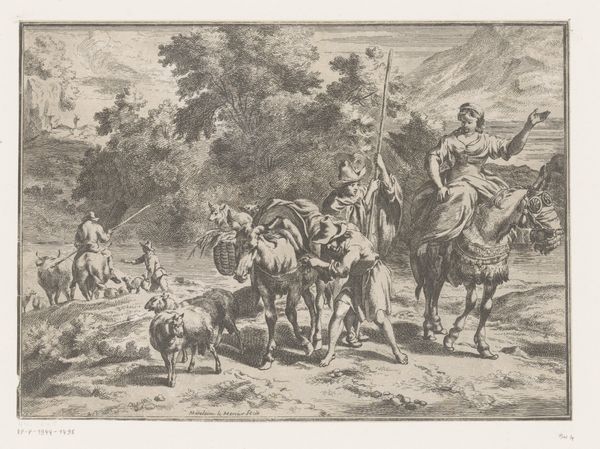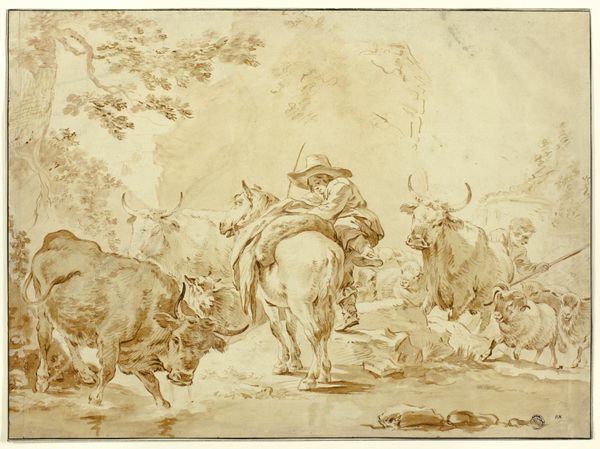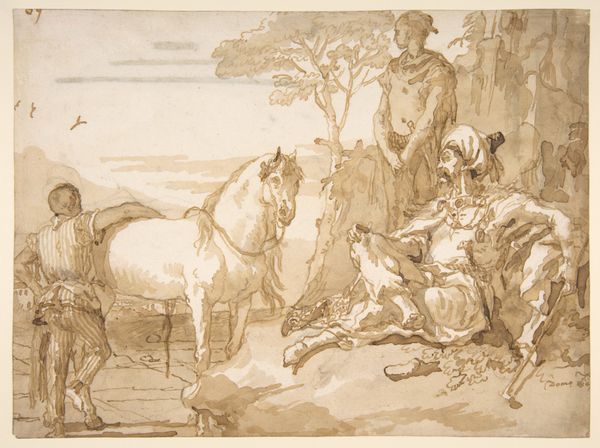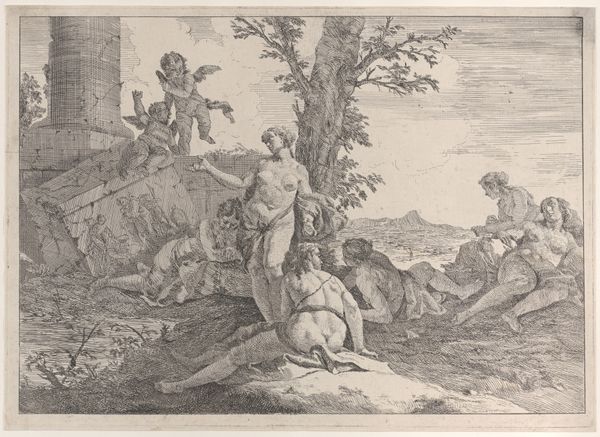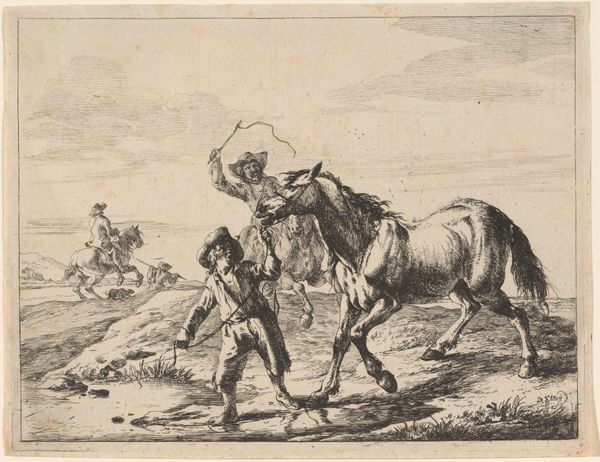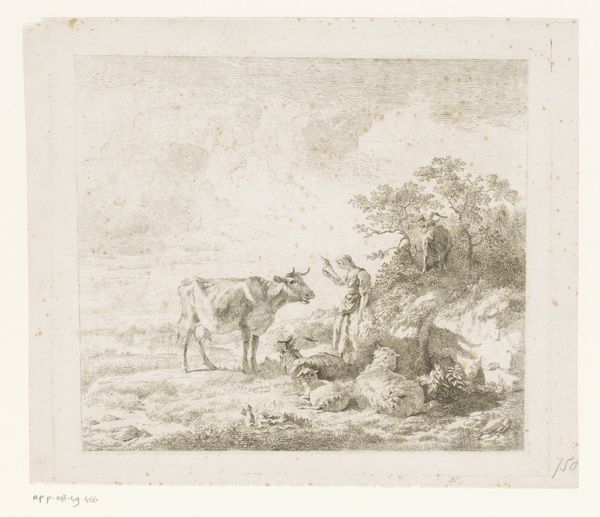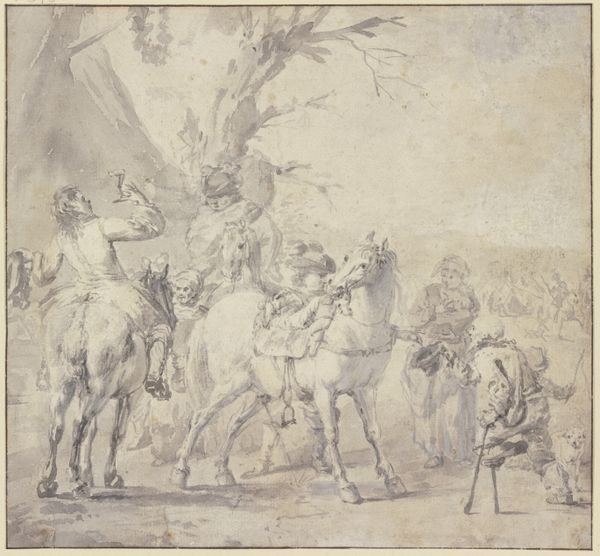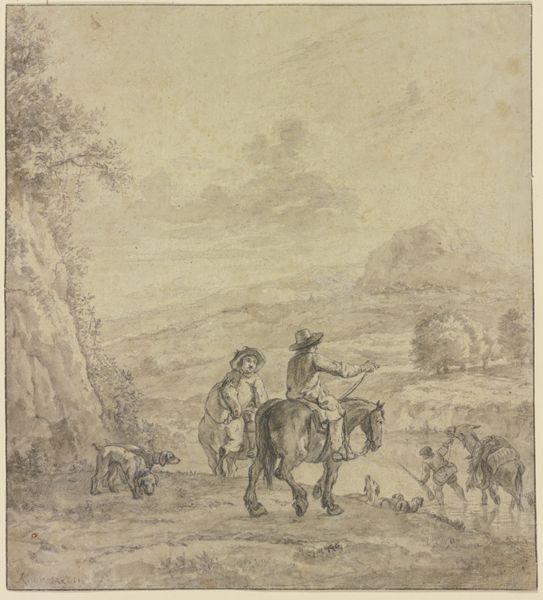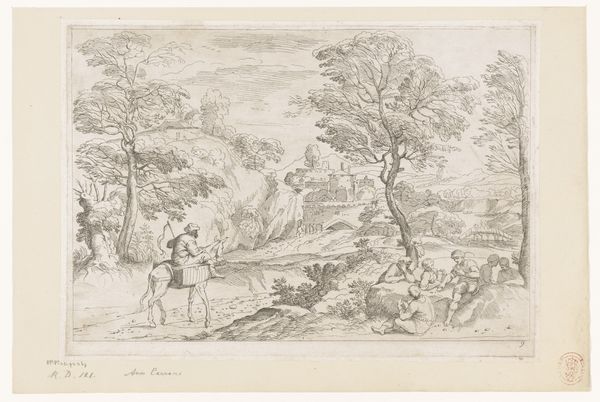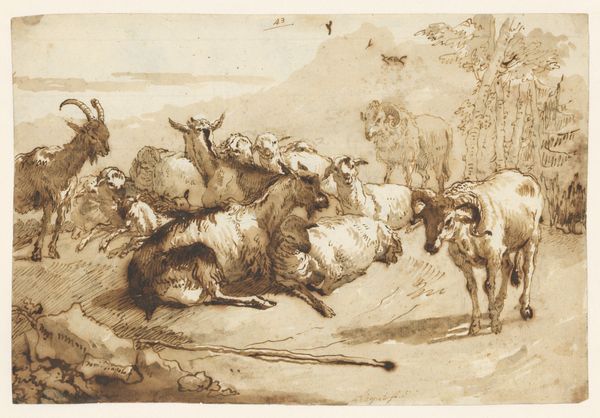
drawing, paper, ink, pencil, charcoal
#
drawing
#
16_19th-century
#
landscape
#
charcoal drawing
#
figuration
#
paper
#
oil painting
#
ink
#
romanticism
#
pencil
#
charcoal
#
history-painting
Copyright: Public Domain
Editor: So, here we have Franz Ludwig Catel’s "Der Graf von Habsburg überlässt dem Priester sein Pferd" from 1818, made with ink, pencil, and charcoal on paper. I’m immediately struck by how Romantic the whole scene feels, but it’s a Romanticism rooted in, well, history painting. It feels like a calculated statement. What story does this drawing tell you? Curator: It tells a story of power, Editor, but not necessarily of brute force. Think about the historical context: 1818, post-Napoleonic Europe, and a rising tide of nationalism. Catel is consciously engaging with the Habsburg myth, imbuing them with moral authority rather than just military might. This isn’t simply about a Count giving away his horse. It’s about the imagined social contract and how that gesture reinforces his, and the institution of Habsburg, legitimacy. Why do you think Catel chose this particular moment to represent? Editor: Because it positions the Count as a benevolent ruler! He's giving, sacrificing. It’s not just about generosity; it's political maneuvering. He's literally elevating the church, positioning it beside the aristocracy. Curator: Precisely. It's fascinating how this apparently simple act, the donation, is laden with socio-political implications. And look at the medium itself, charcoal, ink, and pencil – less imposing than oil, perhaps reflecting a subtle shift in how power was being projected. Did representing power shift to subtler depictions? Editor: It’s really interesting how even the artistic choices contribute to the political narrative, influencing and subtly enforcing the message of power and philanthropy, like they go hand in hand! I initially focused on its Romantic aesthetic, but you’ve completely opened up how I perceive its deeper meaning. Curator: Every artwork, even drawings that look so quaint on the surface, participate in larger conversations around history, authority, and public image. Remembering that context can unlock some incredible depth!
Comments
No comments
Be the first to comment and join the conversation on the ultimate creative platform.

